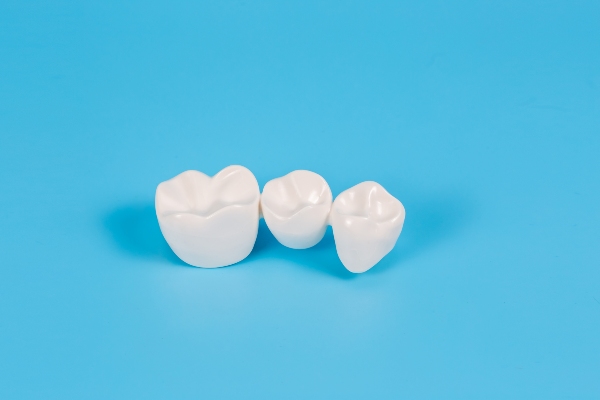 Dental bridges are an effective option for people missing teeth due to trauma, infection, or decay. They can prevent the teeth from shifting, a common side effect of missing teeth. They also restore normal oral function and appearance. Here are a few types of dental bridges a dentist might consider.
Dental bridges are an effective option for people missing teeth due to trauma, infection, or decay. They can prevent the teeth from shifting, a common side effect of missing teeth. They also restore normal oral function and appearance. Here are a few types of dental bridges a dentist might consider.
Traditional dental bridge
A traditional dental bridge is the most common the dentist employs. The design consists of two dental crowns on either side of a pontic or false tooth. It is custom-made and often requires two appointments to place.
The first appointment involves shaving down the two teeth adjacent to the space left behind by the missing tooth just above their roots. The dentist will then take 3D scans and a mold of the patient's teeth to send to an offsite lab. This will lab craft the dental bridge to fit snugly on the shaven teeth and span the space. Finishing the appointment will involve placing a temporary bridge to protect the shaven teeth and restore functionality.
The second appointment—approximately two weeks later— involves placing the custom bridge. The dentist will test the fit and the patient's bite to ensure no issues before bonding it in place. A traditional dental bridge has a lifespan between five and 15 years with proper care.
Cantilever dental bridge
While similar to a traditional dental bridge, the cantilever is slightly different, only consisting of one crown at the end of the pontic. They can also consist of composite or metal materials. However, the process will remain the same. The first appointment will require the dentist to shave down only one of the natural teeth adjacent to the gap. It is good to note that while traditional bridges are more likely to be placed at the back of the mouth, cantilever bridges are more likely to be at the front.
Maryland dental bridge
Maryland dental bridges are another replacement for the front teeth. Their design consists of metal "wings" attached to the pontic's back. The process is simple compared to the alternatives and requires no shaving of adjacent teeth. It does, however, require the dentist to etch or make grooves on the back of adjacent teeth of the gap to allow the metal clasps to attach to them firmly. To ensure the dental bridge does not move, the dentist will apply and cure a resin bond to the back of the teeth and bridge. With proper care, Maryland dental bridges have a lifespan of at least ten years.
Implant-supported dental bridge
Implant-supported dental bridges have a longer process than the others on this list. It also involves multiple procedures. However, it is a favorite among dental professionals due to its durability. The process involves surgically implanting a titanium post into the jawbone. On top of this post is another small titanium piece that juts out the gum line, enabling a traditional dental bridge to be firmly attached to it. While the traditional bridge will likely need to be replaced within 15 years, the dental implant can last a lifetime as it will act as tooth roots.
Call us for more information
Dental bridges are a great tooth replacement option. If you are curious to discover which is right for you, contact our office and schedule a consultation.
Request an appointment or call Chesterfield Dentist at 804-412-0867 for an appointment in our Chester office.
Recent Posts
Dental bridges and dental crowns are wonderful, durable options to restore a smile. However, they are both employed for different reasons. By understanding the specifics of both, patients can learn which option is best for their needs when consulting with a dentist.Dental bridges are recommended after a tooth extraction, whether by trauma or professional intervention.…
Dental bridge placement will need two visits. The patient will go through a short process that will not be invasive at all. The result will improve the patient’s dental and general health. Knowing the placement process for this restoration can help prepare you for your next visit. Here is the placement process for a dental…
Both dental bridges and implants are popular, effective tooth replacement solutions. However, there are cases in which a general dentist may recommend a dental bridge over implants. This may be due to the number of teeth missing, their location, and the strength of the underlying jawbone, among other factors. Understanding how each of these treatments…


